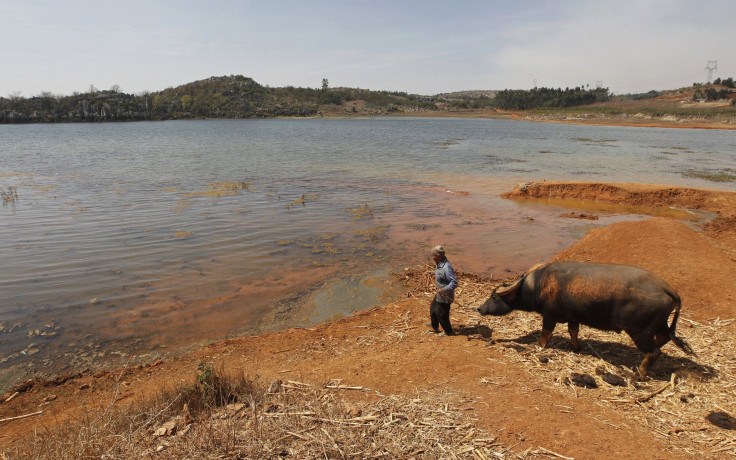Drought In Southwest China Affecting Millions For Fourth Consecutive Year [PHOTOS]

Over one million people in southwestern China are estimated to be facing a drinking-water shortage as two separate droughts continue to affect the area.
According to provincial drought relief authorities, the combination of dry weather and high temperatures in Guizhou and neighboring Yunnan province has already affected over a million people, and at least 100,000 livestock and roughly 68,000 hectares (168,000 acres) of crops in the farming province are also affected.
The China Daily interviewed a farmer, Zhu Chunquan, who walks roughly 10 miles (16 kilometers) through the mountainous areas of southwestern China to retrieve water for his family. Weather forecasts won’t be expecting rainfall for at least another nine days in the parched areas, meaning Zhu will continue to have to trek long distances for his water.

The ongoing drought, which began last autumn, is affecting 47 counties and districts across several provinces.
“No one knows when the drought will end,” said48-year-old Zhu , who is also worried about his harvest. Aside from some minor sales from his dried apricots, Zhu is yet to make money this year. In his village, he says, they haven't had rain since early February.
Some are hoping that when May rolls around, which marks the beginning of the area's rainy season, some of the drought will be alleviated. Unfortunately, the region’s recent history shows just how persistent the drought has been.
Last summer, the South China Morning Post reported, Guizhou had its worst drought in six decades. Local reports claimed that over 12 million residents had shortages of drinking water and forest fire prevention became a big concern for the area. This is the fourth consecutive year the southern Chinese region has suffered from a severe drought, and the problem is only expected to remain.
China’s National Climate Center predicts that the area's climate and rainfall patterns are changing, and is expecting a possible permanent decrease in precipitation over the next 20 years.
Nearby Sichuan province has begun using cloud seeding as a way to combat the severe droughts in hard-hit areas. Cloud seeding was first introduced in China in preparation of Beijing’s 2008 Summer Olympic Games. Cloud seeding is a form of weather modification that uses chemicals spread by ground generators, or by plane, that induce precipitation. During the Olympics, cloud seeding allowed for more frequent precipitation, clearing much of the city’s industrial smog.
Yunnan also plans to build 400,000 cisterns a year, starting now, until 2015. The cisterns will help residents store and collect rainwater from wetter seasons.
However, Lantian, a nonprofit organization who has been helping in disaster stricken-areas in south China, says that though the cisterns will be helpful, what the area needs is roads and water channels to otherwise inaccessible rivers and water sources. The development of both structures will help farmers like Zhu have faster and easier access to water supplies during the increasingly dry times.
© Copyright IBTimes 2024. All rights reserved.






















